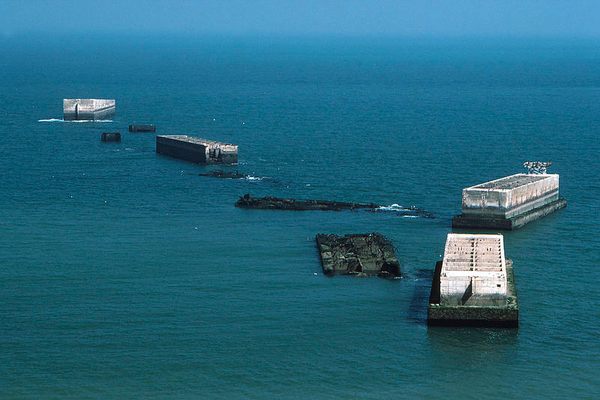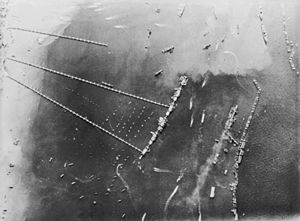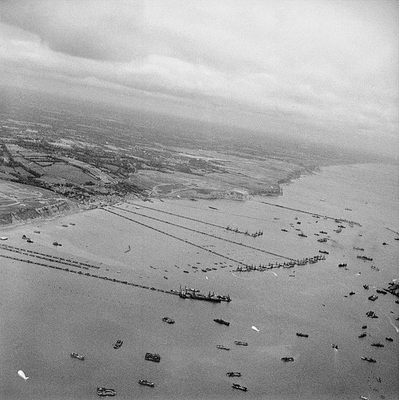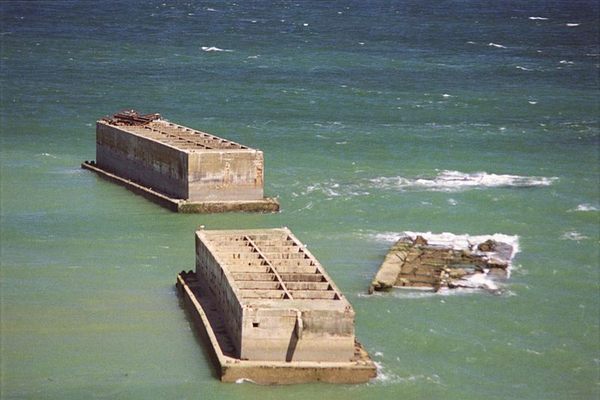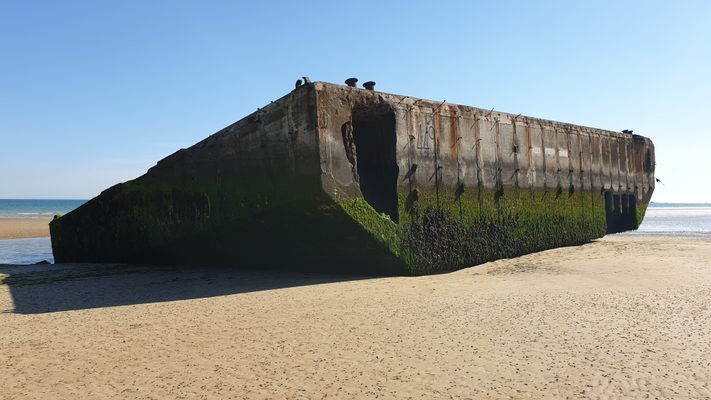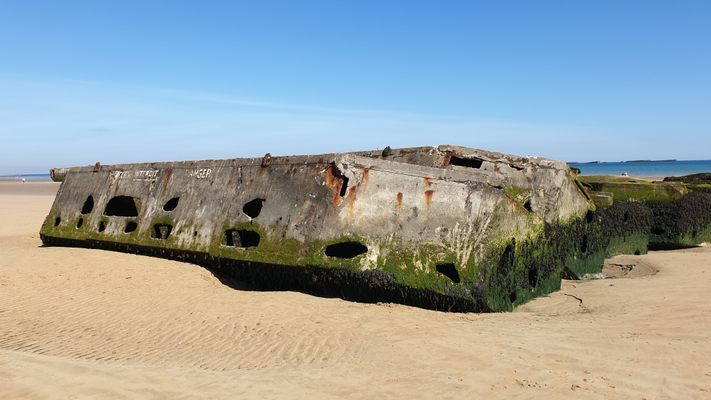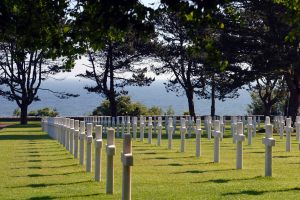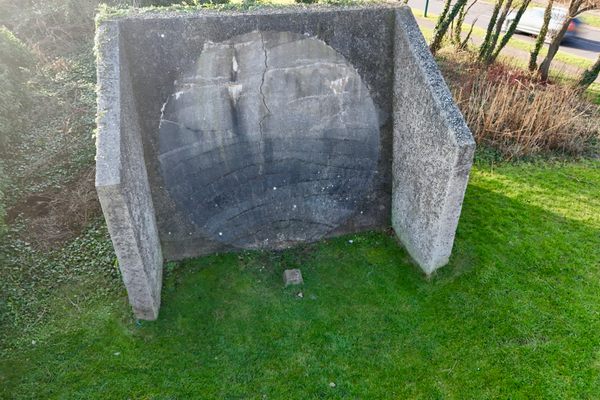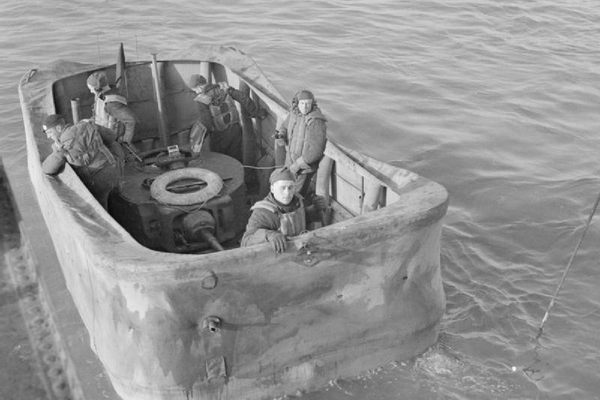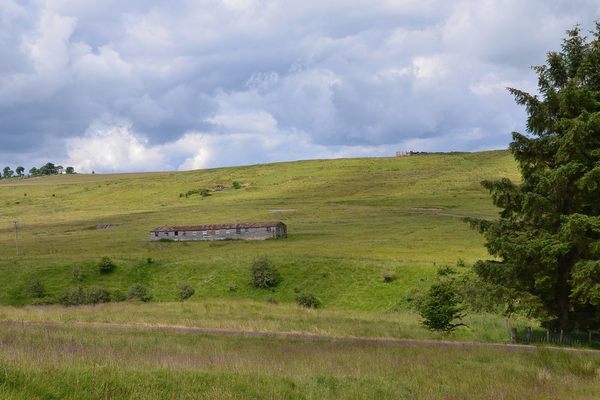About
Considered one of the great engineering feats of World War II, Mulberry harbours were temporary mobile harbours developed during World War II for unloading troops, vehicles and supplies during the Allied invasion of Normandy in June 1944.
This British invention was developed following lessons learned during the ill-fated Dieppe raid two years prior, where troops discovered that quickly capturing a well-defended port was impossible.
After the Allies successfully landed and established beachheads following the D-Day invasion of Normandy, two Mulberry harbours, previously constructed in secret at various sites across the UK, were taken in parts across the English Channel and reassembled off Omaha Beach and Gold Beach at Arromanches.
The Mulberry harbours were to be used until a French port could be captured. It was not until six months after D-Day that the port of Antwerp in Belgium was captured. The Mulberry harbour at Omaha Beach was abandoned after it was damaged in a storm in late June 1944 but the use of the harbour at Gold Beach continued at nearly full capacity for 10 months after the invasion. Over 2.5 million men, 500,000 vehicles, and 4 million tonnes of supplies were carried across it before it was finally abandoned.
Along with the components of the mulberries, the harbours were protected from swell and waves by block ships deliberately sunk adjacent to the harbour. Today sections of the Mulberry harbour still remain with huge concrete blocks sitting on the sand, and more can be seen further out at sea.
Related Tags
Published
October 17, 2016

